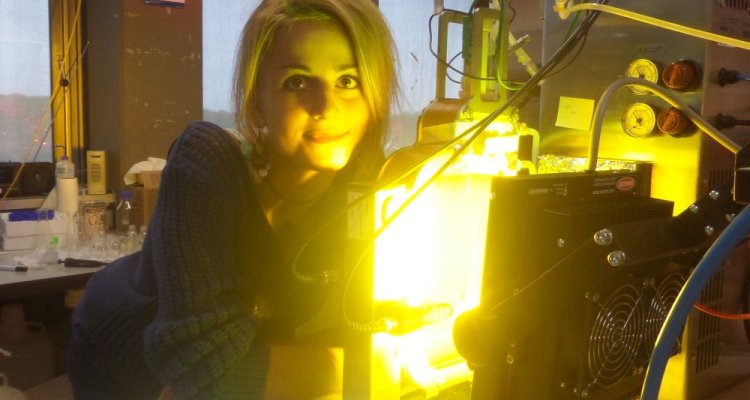
Project
Microalgae production in liquid foam-bed photobioreactors
The goal of this study is the development of a novel microalgae cultivation design that could enable economically feasible cultivation by reducing biomass production costs. Large-scale and low-cost production systems for microalgae are a necessity in order to exploit their huge potential. Most techno-economic analyses up-to-date show that further progress is needed in order to achieve cost-effective and energy positive large scale microalgae cultivation for the production of specialties for food and aquaculture as well as biofuels and bulk chemicals.
Background
The cultivation of algae in liquid-foams might have several advantages over other cultivation systems. These advantages are the increased mass transfer and CO2 removal efficiency due to the big interfacial surface area and the increased residence time in the photobioreactor. Also the pressure drop in the reactor is severely reduced and all will lead to a large reduction in energy costs for aeration. Moreover, the biomass density is increased due to the shortened light path and, consequently, harvesting and processing costs can be severely reduced. Finally, the reduced pressure drop in the system leads to reduced material requirements which is beneficial for large scale systems. These benefits might give rise to an economically feasible algae cultivation prospect.
Aim
The objective of the project is to develop a liquid foam-bed photobioreactor as an innovative microalgae cultivation concept. The productivity of the reactor will be maximized by the development of efficient methods for foam formation and break up. This can be done by the selection of suitable foam stabilising agents and microalgal strains and by the design and operation of the photobioreactor. The final goal of the project is to set up and operate a pilot-scale outdoor liquid foam-bed photobioreactor paving the path for further scale-up.
Approach
Firstly, the project aims to reveal suitable foam stabilising agents and foam break-up methods in order to get a controllable foam formation. Since growing microalgae continuously take up carbon dioxide and produce oxygen, the gas in the foam bubbles has to be refreshed in order to avoid CO2 limitation and O2 accumulation. Thus, the gas phase has to be separated from the liquid phase containing algae. For this purpose, different methods for foam break-up will be tested, which are either based on self-drainage of the foam or based on the utilisation of foam breaking devices. In the first case, the foam is allowed to rise to that high levels that the liquid films drain by themselves and the foam breaks up spontaneously. In the second case, both chemical (e.g. coated plates, responsive particles) and mechanical solutions (e.g. stirring, needles on the top of the reactor, spraying liquid on the foam) will be investigated.
Next, the performance of the foam-bed photobioreactor will be investigated, described and possibly further improved. The performance is described by productivity, biomass density, gas flow rates and pressure drop in the reactor. We also aim to develop a mathematical model describing microalgae growth in foam bed photobioreactors. Furthermore, a pilot-scale liquid foam-bed photobioreactor will be tested outdoors. Ultimately, a conceptual large-scale liquid foam-bed photobioreactor will be designed.
Thesis projects
There are different topics available for BSc or MSc thesis within the project! If you are interested, please feel free to contact me!
Acknowledgement
The work is performed in the framework of the MIRACLES project, which is supported by the European Commission through the 7th Framework Program under Grant Agreement No. 613588.